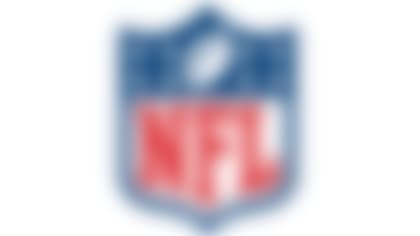NFL franchises use contextualized data to create competitive advantages. In order to realize an edge, teams need to employ the right data in the right way at the right time. This means distilling, interpreting and applying only the most influential data in a framework that accounts for their personnel, their opponents and their evolving game situations. My goal is to be your analytics department. Each week this season, I want to work for you by giving you a peek into which numbers flag in my models as the most impactful ... or the most misunderstood.
As always, let me know if your eye test is picking up on something interesting, or if there's a stat/trend you'd like me to take a deeper look at. You can hit me up on Twitter @cfrelund. As with any great analytics department, the more collaborative this is, the more value we can create.
With 32 games left to play in the 2019 campaign, it's worth taking a closer look at the implications of being the top seed in the playoffs and what it could mean for this season's teams in the NFC. The overall accounting stat shows that since 1990 (when the current playoff format was introduced), 14 of 29 Super Bowl champions (48.3%) were the No. 1 seed in their respective conference, while five of the past six Super Bowl champions were also No. 1 seeds.
The NFC's seeding is very much up for grabs, with five teams technically able to snag the No. 1 slot over the final two weeks of the season. (While the winner of the NFC East still has yet to be decided, neither the 7-7 Cowboys nor the 7-7 Eagles will be able to catch up to the 49ers, Seahawks, Packers, Saints or Vikings, all of whom have 10 wins or more; the same is true of the 8-6 Rams, who remain in the hunt for a wild-card spot.) I took a more contextualized look at those five teams and their attributes, comparing them to playoff teams from the past 15 seasons. First, I ran 100,000 simulations to calculate the current chance each has to be the No. 1 seed, then I ran the model another 200,000 times for each team, once simulating what happens if they got the top spot and once if they were a wild-card team, with the resulting difference illustrating the impact of landing the top seed on their chances to reach South Beach.
Before we dive in, here are a couple of notes to consider. First, "Super Bowl chances" reflect each team's chances of reachingSuper Bowl LIV as representatives of the NFC, not winning Super Bowl LIV. Second, all percentages except for win percentage for Week 15 will shift after Week 15, depending on this weekend's outcomes.
Here's how everything netted out, with teams arranged according to their chances of winning the top seed in the NFC:
1) San Francisco 49ers: 41.8%
Record: 11-3, currently No. 5 seed.
Week 16 vs. LAR: SF wins in 59.9 percent of simulations.
Week 17 at SEA: SF wins in 54.4 percent of simulations.
Super Bowl chances if No. 1 seed: 24.2 percent.
Super Bowl chances if wild-card team: 15.7 percent.
Net difference: -8.5 percentage points.
San Francisco is the only team that completely controls its ability to earn the top slot, so long as it wins out. Defensive pressure has been a constant and consistent source of strength. No front has had more disruptions (defined as getting within a 5-foot halo around an opposing quarterback) than the Niners. The back and front of the defense have been working well together, resulting in a 58.2 opponent passer rating on deep passing attempts (third in the NFL), with two picks and three TDs allowed on such plays. The pass defense helps insulate the team's Super Bowl chances from dropping off too much in the wild-card scenario. Further, Next Gen Stats shows that San Francisco's pass-catching targets are averaging 3.3 yards of separation on deep attempts this season (most in the NFL and 1 yard ahead of the next closest team). With that kind of separation, Jimmy Garoppolo is completing 56 percent of deep passes, best among passers with 25-plus such attempts.
2) Seattle Seahawks: 36.0%
Record: 11-3, currently No. 1 seed.
Week 16 vs. ARI: SEA wins in 74.7 percent of simulations.
Week 17 vs. SF: SEA wins in 45.5 percent of simulations.
Super Bowl chances if No. 1 seed: 22.3 percent.
Super Bowl chances if wild-card team: 10.5 percent.
Net difference: -11.8 percentage points.
Injuries add volatility to the Seahawks' forecasts, especially on defense, with key players like Jadeveon Clowney, Bobby Wagner and Quandre Diggs dealing with various maladies. Next Gen Stats shows that the Seahawks are only pressuring opposing quarterbacks on 22.2 percent of dropbacks (31st in NFL), which introduces a lot of risk. So far, this hasn't been too problematic, as the 'Hawks are only allowing a 71.5 opponent passer rating on passes of 10-plus air yards (third best in NFL). This is one of those red flags that will merit attention as the level of competition increases, though Russell Wilson's style of play does mitigate the risk that comes from this potential weakness, especially considering his ability to keep Seattle's offense ahead of the opposing offense via chunk passing plays. Wilson leads the NFL in attempts (76), completions (34) and passing yards (1,140) on deep passes and is the only quarterback to have earned more than 1,000 yards from deep passes this season. He also has the third-best passer rating from this distance, at 120.1.
3) Green Bay Packers: 11.5%
Record: 11-3, currently No. 2 seed.
Week 16 at MIN: GB wins in 52.4 percent of simulations.
Week 17 at DET: GB wins in 78.2 percent of simulations.
Super Bowl chances if No. 1 seed: 23.0 percent.
Super Bowl chances if wild-card team: 10.4 percent.
Net difference: -12.6 percentage points.
Fun fact: When under pressure over the past two seasons, Aaron Rodgers has thrown zero interceptions and seven touchdown passes, per Next Gen Stats. What's even more predictive of success is that Rodgers has been pressured at the fourth-lowest rate of any quarterback this season (19.6 percent), which is a good thing, because as amazing as that TD-to-INT ratio under pressure is, Rodgers' completion percentage under pressure is only 38.8 this season, fourth-lowest among qualified QBs. On deep passes, however, Rodgers ranks second in the NFL with a 122.7 passer rating (8:0 TD-to-INT ratio). My model loves the upside the Packers defense can provide. Next Gen Stats counts the Packers as pressuring opposing QBs on 32.2 percent of dropbacks (second best in the NFL), with Za'Darius Smith amassing 60 QB pressures this season (second most in NFL). My model adds that measurements show this pressure is the fifth-most disruptive, in terms of the Packers' ability to get within the five-foot halo around opposing QBs.
4) New Orleans Saints: 9.9%
Record: 11-3, currently No. 3 seed.
Week 16 at TEN: NO wins in 55.7 percent of simulations.
Week 17 at CAR: NO wins in 71.3 percent of simulations.
Super Bowl chances if No. 1 seed: 30.2 percent.
Super Bowl chances if wild-card team: 21.0 percent.
Net difference: -9.2 percentage points.
The fact that defensive tackle Sheldon Rankins and pass rusher Marcus Davenportlanded on IR creates uncertainty on defense, helping drive down the Saints' chances of securing the top seed. However, two advantages stand out on offense. No non-quarterback offensive player in the NFL has a higher win-share total (a metric calculated by my models to establish how much each player contributes to the conversion of first downs and touchdowns on offense, or to stopping them on defense) than Saints receiver Michael Thomas (ahem, he could be in consideration for league MVP). Quarterback Drew Brees, meanwhile, has been pressured at the third-lowest rate of any QB this season (19.4%), with a combination of scheme and Brees' production keeping him from having to rely on tight-window catches (Brees has thrown just 12.9 percent of passes into tight coverage).
5) Minnesota Vikings: 0.8%
Record: 10-4, currently No. 6 seed.
Week 16 vs. GB: MIN wins in 47.6 percent of simulations.
Week 17 vs. CHI: MIN wins in 69.6 percent of simulations.
Super Bowl chances if No. 1 seed: 19.9 percent.
Super Bowl chances if wild-card team: 9.1 percent.
Net difference: -10.8 percentage points.
Plenty is working in the Vikings' favor in 2019. Quarterback Kirk Cousins leads the NFL with a 131.0 passer rating on deep passes (and eight touchdowns). He looks even better when you examine passes in the intermediate range or deeper (131.6 passer rating, with 18 touchdowns and three picks on passes of 10-plus air yards). Next Gen Stats also adds that Cousins has been great under pressure, measuring a 93.3 passer rating (third best in the NFL), with 3 TDs and 0 interceptions. This is a nearly 20-point improvement from last season, when he earned a 75.2 passer rating with a 5:6 TD-to-INT ratio when under pressure. O-line play is extremely predictive, and this season, the Vikings have decreased the amount of pressure Cousins has been under by five percentage points (from 33.4 in 2018 to 28.4 this season). Outside-the-tackles rushing has been an important differentiator for playoff teams, and the Vikings' defense is the best at stopping such runs, only allowing 3.8 yards per rush. Further, Next Gen Stats counts not one but twoVikings defenders among the top five in pressures: Everson Griffen ranks fourth with 54 and Danielle Hunter is fifth with 53. Per NGS, Minnesota is the only team with two defenders in the top 12 in terms of number of pressures generated.
So, beyond the obvious difficulty of overtaking the four 11-3 teams in line for the top seed ahead of them with two games left, what's the limiting factor facing the Vikings? The uncertainty stemming from the shoulder injury running back Dalvin Cook suffered in Week 15. The above percentages were calculated with the presumption that Cook will not play; consider that if we presume Cook were to be 100 percent for this week's game against the Packers, Minnesota's win percentage increased to 51.3.
Follow Cynthia Frelund on Twitter @cfrelund.




